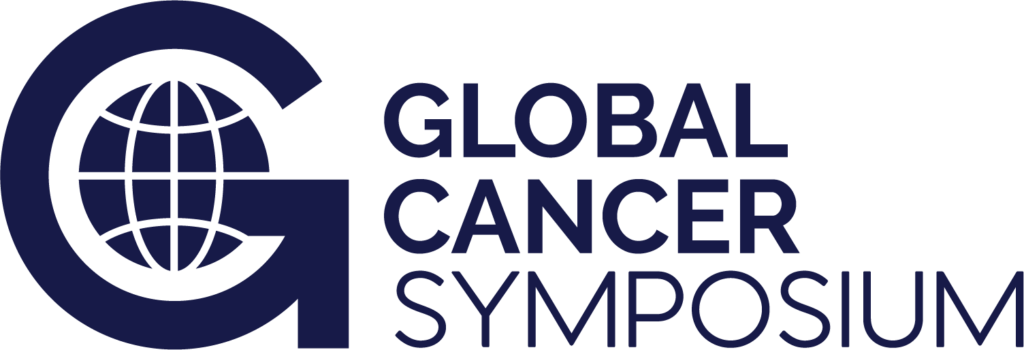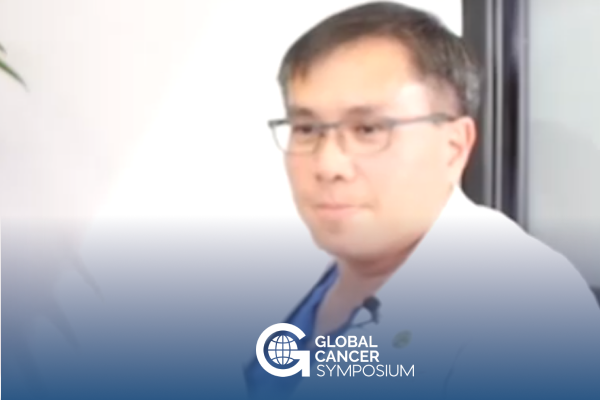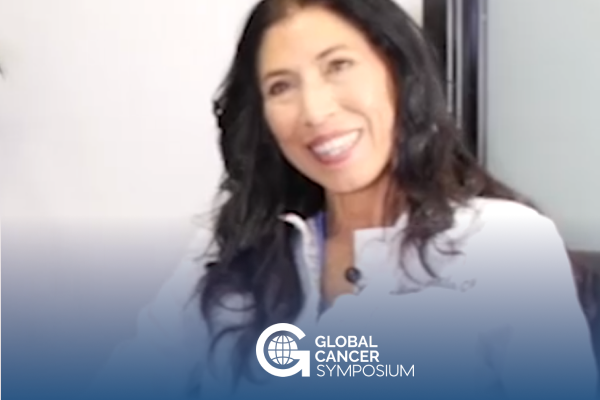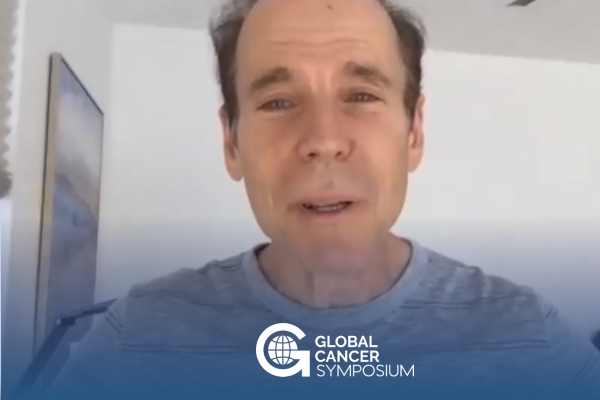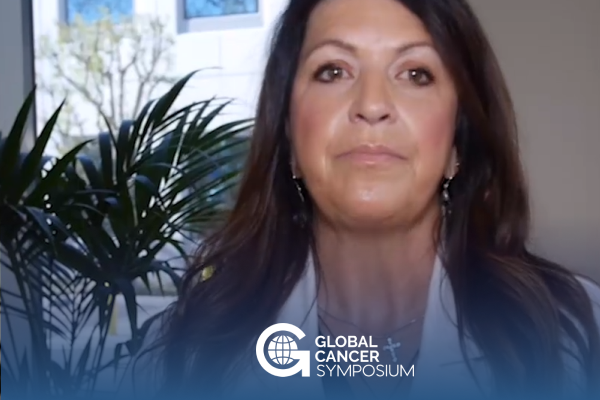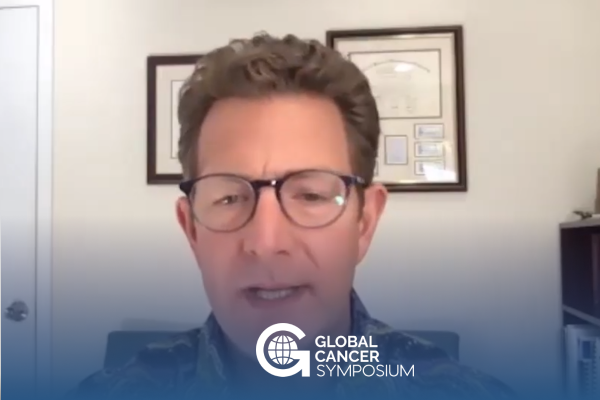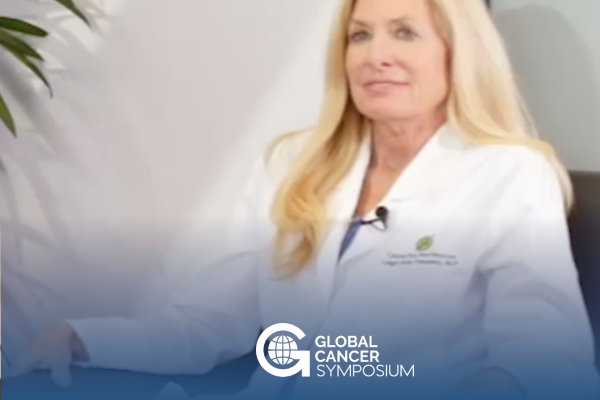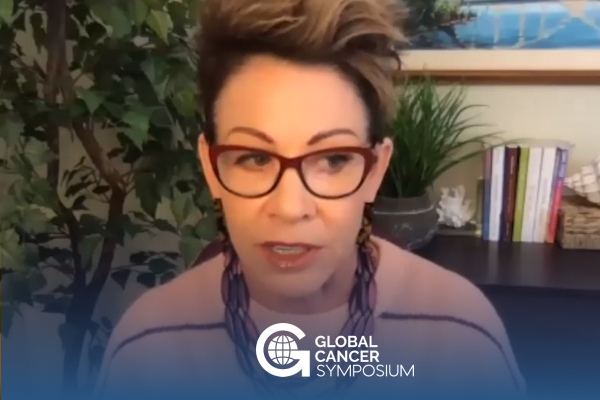Join the discussion below
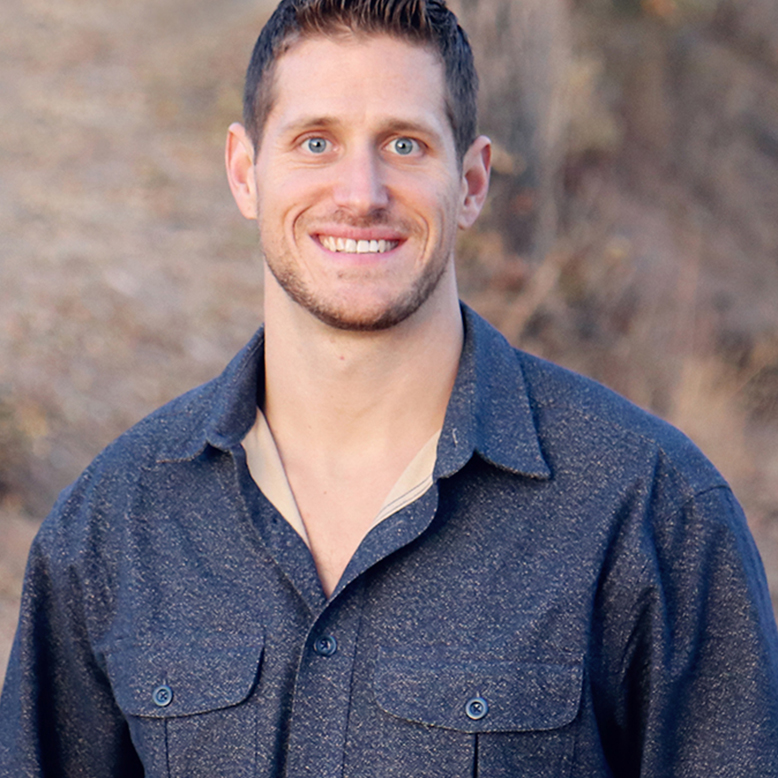
Nathan Crane is an award-winning author, inspirational speaker, plant-based athlete, event producer and 18x award-winning documentary filmmaker. Nathan is the Founder of The Panacea Community, Creator of the Global Cancer Symposium, and Director and Producer of the documentary film, Cancer; The Integrative Perspective. He is also the Director of Strategic... Read More

Dr. Acebedo, obtained his medical degree at Cebu Doctors’ University, Philippines, and completed his residency in Internal Medicine at the University of Cincinnati affiliate Good Samaritan Hospital. He is board-certified in Internal Medicine. He has taken advanced courses in Integrative and Functional Medicine. He is a member of the Institute... Read More
Dr. Acebedo, obtained his medical degree at Cebu Doctors’ University, Philippines, and completed his residency in Internal Medicine at the University of Cincinnati affiliate Good Samaritan Hospital. He is board-certified in Internal Medicine. He has taken advanced courses in Integrative and Functional Medicine. He is a member of the Institute of Functional Medicine, the American Board of Anti-Aging and Regenerative Medicine, and Swiss Biologic Medicine through Dr. Thomas Rau of Paracelsus Clinic, Switzerland.
Related Topics
Arsenic, Cancer, Cancer Prevention, Cancer Treatment, Chemotherapy, Chronic Diseases, Chronic Inflammation, Conventional Medicine, Detoxification, Fatigue, Functional Medicine, Heavy Metal Toxicity, Hormonal Imbalance, Hormone Replacement, Hyperthermia, Hypothermia, Internal Medicine, Lead, Libido, Mercury, Mineral Deficiency, Non-toxic Treatments, Nutrition, Patient Care, Radiation, Repurposed Drugs, Root Cause, Science, Supplementation, Surgery, Symptoms, Treatment Protocols, Underlying CauseNathan Crane
Hello, everybody. Welcome to the Global Cancer Symposium 2.0 I’m Nathan Crane. I’m really grateful and honored that you’re joining us here again for another great interview. I’m here at the Cancer Center for Healing in Irvine, California. We’ve done a series of incredible interviews here, and we have another great one for you today that I’m really excited to share with you, because there’s a few things we’re gonna talk about here with Dr. Erich Acebedo, who is one of the senior physicians here at the Cancer Center for Healing, about a few topics that maybe you don’t even know about, maybe you haven’t heard of, but could potentially help you, or even your own oncologist to support you in your own cancer healing journey further, or maybe you wanna consult with Dr. Acebedo or one of the other integrative medical doctors here at the Cancer Center for Healing. But either way, thank you so much for joining me and for being here on the Global Cancer Symposium.
Erich Acebedo, M.D.
Yeah, thanks, Nathan. Thanks for having me here.
Nathan Crane
You were telling me just a few minutes ago, you actually started out as a conventional MD.
Erich Acebedo, M.D.
Yes.
Nathan Crane
And then you transitioned to an integrative doctor, so what was the impetus that led you to transitioning from conventional to integrative?
Erich Acebedo, M.D.
I started off as an internal medicine, that was my training and background. And after my residency training, I went to a hospitalist work, where you see a lot of patients in hospital setting. I did that for 10 years, and over the years, I’ve seen where patients just kept coming back to the hospital and they’re not getting any better, in fact, they’re getting worse. We treat their symptoms and they get better, they get discharged from the hospital. We call them frequent flyer.
Nathan Crane
Frequent flyer, oh my gosh.
Erich Acebedo, M.D.
We call them frequent flyers because they kept coming back because they’re not getting better. We treat their symptoms and they get initially better then they discharge and then they’re back again.
Nathan Crane
Which is sad because it’s so true in our society today, is that there are, nothing wrong with conventional medicine, conventional medicine has some really great tools and resources, but when we’re dealing with chronic diseases like cancer, in most cases, you’re treating symptoms, you’re pulling at straws, you’re not actually addressing the underlying root cause.
Erich Acebedo, M.D.
The root cause, yeah. And then, over time I started to think, what’s going on? What are we missing here? What am I missing as a physician? Why do they keep coming back? Then, I got sick, I started to feel lousy. I’m usually active, I go to the gym, and I thought it was just the type of work that I’m in a hospital setting. You work days, and then you work nights, sometimes, you rotate. I thought it was just, working nights and then your rhythm get messed up because of the time change. I said, okay, maybe that’s it. But eventually, as far as nutrition, I ate everything at that time.
Nathan Crane
You ate anything and everything you wanted to?
Erich Acebedo, M.D.
Yeah, from sushi or anything. And then, eventually I went to my doctor, who is a friend of mine, who has practice and I said, hey I’ve got this problem that gives me fatigue, and I’ve got, actually that time-
Nathan Crane
Mostly during this chronic fatigue at the time?
Erich Acebedo, M.D.
Kind of like chronic fatigue, and he said, yeah, you might probably have chronic fatigue, let’s run some test, some blood tests on you. So, CBC and all this stuff, the CMP that we test, your kidney function came back normal. He was like, okay, you’re fine. Everything looks good actually. Not just the fatigue, but also my libido was also down and I was like, okay, this is not right, I’m still young, and I was like 35 that time, 34, so this is kind of unusual.
Nathan Crane
That’s a very early age to lose your libido.
Erich Acebedo, M.D.
Right.
Erich Acebedo, M.D.
Yeah. So I was like, okay. And then, I have a workout buddy who was also a nurse and he said, you better see this guy as an integrative doctor. At that time, he called integrative anti-aging, so I was like, oh, what’s anti-aging and that’s interesting. At first, I was like hesitant. Then he said, just see it, ’cause I had the same problem here, he had a hormonal problem and I think had a cardiac problem and he was younger than me, so I was like, okay. I eventually went there and then did some blood tests and found out that I had toxicity.
Nathan Crane
What kind of toxicity?
Erich Acebedo, M.D.
Mercury, I think there was also arsenic and lead.
Nathan Crane
So like heavy metal toxicity.
Erich Acebedo, M.D.
Heavy metal, pretty much heavy metal toxicity, and my hormones were all out of work.
Nathan Crane
Did you have mercury fillings back then?
Erich Acebedo, M.D.
No, but I suspect it was from my diet. I mean, I love sushi and tuna.
Nathan Crane
That’s sad how much fish nowadays is just filled with mercury and heavy metals, right?
Erich Acebedo, M.D.
Right. And going up in the Philippines, we ate a lot of tuna. I didn’t know, I mean, we never learned this in med school and when you go into residency.
Nathan Crane
I’ve heard they only teach, in most medical doctors I’ve interviewed over the years, that they only teach around 4 hours of nutritional training in all the med school, was that true for you?
Erich Acebedo, M.D.
That’s exactly true. Yeah, not much emphasis in nutrition. When I found out I was like, oh man. He started fixing me, getting detox and then replacing my hormones, so I got really my energies back. I was like 10 years, 20 years younger again.
Nathan Crane
And you were doing detoxes?
Erich Acebedo, M.D.
Mm-hmm.
Nathan Crane
What kind of detoxes?
Erich Acebedo, M.D.
At that time he did EDTA, did 10 rounds, and then after that, he followed it up with DMSA appeal and then slowly I saw my results coming down, so I felt really great. I said to my friend, man, I’m so glad that I listened to you that now my life is back. Then I started to learn about, what’s anti-aging, this is pretty interesting, how comes I didn’t know this? Then, when I went to conference, the A4M, American Academy of Anti-Aging Medicine, I was blown away when I first went in there for the conference, it was like a light bulb moment for me. Wow, this is what I’ve been looking for, and the emphasis is so much on nutrition supplementation, because we have a lot of deficiency, and that’s where I learned a lot of stuff. I mean, the food that we’re eating is lacking in minerals because of the farming that we use, we’re using chemicals, so then binds to the minerals in the soil, so I was like, wow, this is great.
Nathan Crane
They’re not putting any more organic matter into the soil or they do, and it’s filled with more chemicals and it’s just as these giant fields of monocultures that don’t allow for any biodiversity and therefore no biodiversity in the soil and therefore no accumulation of these important plethora of vitamins and minerals that our body needs from the plants, right?
Erich Acebedo, M.D.
Right, and that’s what we’re eating now. When I started doing it, I never looked back, so I started learning, learning more. It’s like going to rabbit hole. I started to learn a lot of stuff like, oh, it’s a different world out here, that I’ll never learn back in med school.
Nathan Crane
I’ve been diving down that rabbit hole for 15 years, I know, and it’s never ending, right?
Erich Acebedo, M.D.
Right, even until now I’m still learning and this was like five or six years ago.
Nathan Crane
That’s amazing.
Erich Acebedo, M.D.
Actually around seven years. So I’m still learning until now. It’s like coming back to medical school.
Nathan Crane
So that was your impetus, you became, so then you went to functional medicine training or what was your next step?
Erich Acebedo, M.D.
Then, you have the A4M, and then I started to hear from my other colleagues about the functional medicine. They have a similar concept, and so I did the Institute of Functional Medicine, and I did that, and yeah, it’s kind of similar. Both of them, in essence, just knowing the root cause, what’s driving your symptoms, what’s driving your fatigue. And by learning that, it’s just a lot of stuff, and then functional labs that you need to check on patients and then mold line all of this. Now, we were talking about cancer ’cause we know cancer is the root cause, is the chronic inflammation that brings cancer. Eventually, because most of my patients, when I was in the hospital, a lot of cancer patients, and a lot of my, I have friends and I have family that had cancer. In fact, my grandfather died from pancreatic cancer. Another aunt of mine died from breast cancer.
Nathan Crane
My grandfather died from leukemia and that’s what set me on this whole journey in 2013 to start learning everything I could about cancer and chronic disease and how do we prevent it, how do we heal it, and how do we treat it, in ways that are in harmony with our highest integrity of our body’s potential, our mind and body’s potential.
Erich Acebedo, M.D.
And I’ve notice, once you go into this you start to talk to other doctors the same, kind of, I would say journey because they have the same family members that have cancer. And then you started to learn, okay, what’s, or what we all know is chemotherapy radiation and surgery, but is there something else there? Now we’re seeing, there’s actually a lot of things there that a patient can do.
Nathan Crane
Well, just touring the facility here and meeting with your team and looking at it all, I mean, I’m learning about all kinds of treatment protocols that you offer here and modalities and devices and things that I’ve never even heard of that I’m just like, wow, this is fascinating. And they’re very, very noninvasive and non-toxic, but effective at treating a lot of these things you’re talking about.
Erich Acebedo, M.D.
Right, and this involves science. I mean, there’s science behind it. Like hyperthermia, for example, that’s science.
Nathan Crane
Talk about hyperthermia, how does that help somebody with cancer, hypothermia?
Erich Acebedo, M.D.
Initially, I think everything started, I think in Germany, they’re one of the countries that use the hyperthermia a lot and then spread to other countries. But hyperthermia, essentially is heating your body, body temperature, increasing it to around 40 or 41 degrees Celsius.
Nathan Crane
Which is what Fahrenheit,
Erich Acebedo, M.D.
Fahrenheit,
Nathan Crane
like almost fever?
Erich Acebedo, M.D.
that’s probably 105, 110.
Nathan Crane
So, getting your body into a fever.
Erich Acebedo, M.D.
And that’s when your body, you produce a lot of cytokines, and one of the things also gets produced is the heat shock proteins. What I’ve noticed with cancer patients is, with the test that we do here, the Greek test, the RGCC, that test will tell me if the cancer is sensitive to heat, and most of the time though, I would say 90% to 95% are sensitive to heat. Now, with that, they’re just maybe 5% that are heat resistant though, and I’ve been reading a lot about it. In fact, there was a randomized control trial that was done in Italy where the combined radiation therapy with hyperthermia therapy that almost 50% of the cancer patients, as far as cancer remission with radiation alone, the percentage was 41%.
Nathan Crane
And that’s just remission, meaning that the cancer is not growing anymore but it doesn’t mean that it’s actually gone away?
Erich Acebedo, M.D.
Right.
Nathan Crane
40%?
Erich Acebedo, M.D.
41% for radiation therapy but when they combined it with hyperthermia, it went up to like 83%. And then the five-year survival, and this was the cancer of the head and neck, so-
Nathan Crane
Head and neck cancer.
Erich Acebedo, M.D.
Head and neck cancer, and as far as five-year survival, the radiation, there was zero, radiation only was zero, I was surprised.
Nathan Crane
Nobody lived past five years with radiation during this study with head and neck cancer?
Erich Acebedo, M.D.
Aha.
Nathan Crane
Wow.
Erich Acebedo, M.D.
But when they combined it, it went up to 53% with hyperthermia and radiation. So the mechanism there is you increase the heat and then the cancer cells, like the hyperthermia device that we have here, it heats up the cancer cell to 45 degrees intracellularly. And when you do that, cancer cell, there’s several, I would say five things that happens when you apply hyperthermia. One is, you increase the cytotoxicity of the chemotherapy. If they’re doing chemotherapy, you can use that as some add on. It increases the killing effect of the chemotherapy. Number two, it also sensitizes the cancer cell to radiation. If they wanna do radiation, you can add with hyperthermia.
Nathan Crane
So it’s gonna improve conventional treatments in general now.
Erich Acebedo, M.D.
Exactly. And then, number three is, when you heat cancer cells, it releases heat shock proteins. These are the proteins that would help in repairing the cancer cells. But when we do that, it actually stimulates the immune system. Now, the immune system will see it, oh there’s something going on and there is something foreign, so they start attacking the cancer cells. So, and then number four is the, we call it angiogenesis where there’s blood formation, new blood formation in cancer cells. Actually the heat will kill that, will stop it, you know, the tumor from producing more blood vessels. Number five is it increases blood flow. So when you increase blood flow into the tumor, you increase the delivery of your agents, your treatment, whatever you’re doing, chemotherapy or natural therapies like IV curcumin, or an integrative use IV curcumin and all the glucose blockers that we use, so then that increases the effectivity in there because of the increase in blood flow.
Nathan Crane
Wow, so it supports natural approach as well. It actually enhances the natural supplementation or natural therapeutics you might be using.
Erich Acebedo, M.D.
Right.
Nathan Crane
It enhances effectiveness.
Erich Acebedo, M.D.
Enhances effectiveness and also, yeah, you decrease the tumor burden, tumor load.
Nathan Crane
So, if you’re heating up the cells, why is it called hyperthermia?
Erich Acebedo, M.D.
Hyperthermia comes from the word, you know,
Nathan Crane
Oh, it’s hyperthermia, it’s not a hypothermia. I was thinking freezing cold, hypo, but this is hyperthermia
Erich Acebedo, M.D.
This hyper.
Nathan Crane
So, you’re increasing.
Erich Acebedo, M.D.
You’re increasing the temperature.
Nathan Crane
Yeah, of course, that makes sense, your increasing. Now, are you actually doing this to the full body or is it a targeted, just to where maybe the most cancer cells are?
Erich Acebedo, M.D.
Yeah, so there are different types of hyperthermia. So one is local, which is, let’s say fever, is local meaning just one particular area. So let’s say breast tumor, we can put the heating device there and it doesn’t other way. So they use an electromagnetic, I would say, mechanism there that doesn’t burn your skin, but intracellularly, it heats up, because of ultra low frequency. You can feel it it’s warm, but-
Nathan Crane
Is it infrared?
Erich Acebedo, M.D.
It’s a different wave frequency and it heats up the cancer cell more than what you feel here. Although there’s some situation where if, sometimes we put like a cloth or something, just to prevent it from, sometimes patients can’t tolerate it, but it doesn’t burn. You let it stay for 30 minutes.
Nathan Crane
How many treatments are you seeing that people need to actually see some results?
Erich Acebedo, M.D.
They need multiple treatments. I would recommend usually three times a week for like three or four weeks treatment along with other therapies. So, that’s the local therapy that we do. There is regional hyperthermia, which is available in other clinics, which is a larger area. For example, the abdomen, you can see this round thing that they can put here, and it targets a much broader area, especially if they have like metastasis to the lymph nodes. Then there’s the whole body hyperthermia, if especially they’re stage IV cancer patients-
Nathan Crane
And it’s all throughout the whole body,
Erich Acebedo, M.D.
The whole body. Unfortunately, I think it’s not FDA approved here in the U.S., so we didn’t have that here in the U.S. and in other countries like Mexico and Asian countries they have that, Germany, they have that full body hyperthermia. And it’s basically the same mechanism. If you go back to William Coley who developed the, they call it Coley’s toxin, where he noticed that this patient went into remission who developed, he had a cancer, I don’t remember what type of cancer he had, but apparently developed some sort of bacterial infection. And he had fever and infection and actually they found out that his tumor shrunk and went into remission.
Nathan Crane
It was because of stimulating the immune system, right?
Erich Acebedo, M.D.
Exactly, the mechanism there was stimulating the immune system. So, basically, the same mechanism as hyperthermia
Nathan Crane
You’re stimulating the immune system, yeah, which is like if I was actually doing either hypo or hyper, you know, I do ice baths, for example, and we know ice baths, if you’re submerging, you know cold hydrotherapy, there’s a lot of studies on that that it does stimulate your immune system and then vice versa and infrared sauna, which I know you have the infrared sauna here as well, you’re heating up your cells from the inside, same thing, you’re stimulating your immune system. Would you say that is probably like the most important thing of all the work as an integrative doctor you do, is really working on enhancing the patient’s immune system?
Erich Acebedo, M.D.
Exactly, that’s the main thing in cancer. To me cancer is a problem with the immune system. So it is defective and that’s exactly what we’re doing here in integrative medicine, is boosting the immune system with supplements, treatments that will boost the immune system and we do have a lot of that. So hyperthermia is one of them. And then, actually now, there is some research about low-dose chemo, which is the metronomic, I know some university hospitals are doing that now and some oncologists, but it’s not yet a widely practice but I started reading about it at least stimulus immune system, ironically, yeah, that’s what they’ve been seeing. So, the conventional of those cause it’s opposite. You suppressed immune system, the conventional system.
Nathan Crane
Low-dose make an IPT, and so potentially a therapy, which I believe we’re interviewing one of your colleagues while we’re here about that ’cause you guys offer that here. It does make sense to me, because you are basically injecting a smaller amount of what your body recognizes as a toxic substance. So it’s gonna stimulate a response to help enhance the immune system.
Erich Acebedo, M.D.
Yeah.
Nathan Crane
So it makes perfect sense that that would happen. You were talking also about, beforehand you were telling me the use of repurpose drugs, talk a little bit about that. What are repurposed drugs and how do you use them to help people with cancer?
Erich Acebedo, M.D.
So, when I learned about cancer, I started reading and following Dr. Tom C. Fred’s research on it, and I read his book “Cancerous as a Metabolic Disease,” and all of this goes back to Otto Warburg’s research in the 1940s, where cancer uses glucose as the main fuel and ferments glucose, and that’s because there’s a damage to the mitochondria. So once you have damage to the mitochondria the cancer cell will switch to these fermentation process which is a pretty native type of a metabolic pathway that the cancer uses.
Nathan Crane
Yeah, and not very productive.
Erich Acebedo, M.D.
Not very productive, they’re not really efficient. It only produces like certain amount of ATP. So usually in a normal cell, we produce 30 or 36 ATP and that’s the energy, yeah. Cancer cells are lower than that-
Nathan Crane
Like five or something, right?
Erich Acebedo, M.D.
Five, six, yeah But then that’s why they compensate by switching to fermentation, so they grab glucose, the main fuel. Now, the repurpose drugs, we actually have a lot of drugs out there that blocks the glucose pathway, all the different genetic, I would say overexpression or upregulation in cancers, we see those, again, in the Greek tests that we do, I can see the genetic markers and on these genetic markers there are actually drugs out there that are cheap, it’s been in the market for 65 years, 50 years, that we can use to block these different pathways because cancer cells use different pathways, right? Glucose and then glutamine, which is an amino acid. If you block glucose by itself then they switch to glutamine pathway, which is an amino acid. So there is drugs that we can use that, for example, dipyridamole, which is an old drug that they used it in the 1960s for heart attack in combination with aspirin. I think the brand name is Persantine. And I remember my father used-
Nathan Crane
This is an over the counter drug?
Erich Acebedo, M.D.
It’s over the counter. It’s still actually available until now. And metformin is another one that I use, one thing that I like about metformin is ’cause it block different pathways. So one drug that we know the side effects already, I mean, it’s generally tolerable, and it blocks four different pathways. It blocks the glucose pathway, and we know that, and then the IGF, which is the insulin growth factor
Nathan Crane
Which helps slow down the growth of the cancer cells.
Erich Acebedo, M.D.
Right. And then you have the AMPK which is a gene that would switch the cancer from anabolic to catabolic. Once you’re in a catabolic state, then you stimulate glycolysis, where you start producing more ATPs and then break down glucose. Then, I just found out also the metformin blocks HER2, which is the marker that you see in breast cancer patients. Some of them they will have HER2 positive. So, metformin also blocks that. All of this, in one drug, we can use it to block the different pathways. Now again, that’s just four pathways, cancer cells uses multiple pathways.
Nathan Crane
Even ketones, Right. I know there’s, some people are using a ketogenic diet for helping people with cancer, but we know that actually some cancers can switch from glucose and thrive on ketones.
Erich Acebedo, M.D.
Right. So speaking about that, then I know they’re doing a lot of research. I actually also read the book, “How To Starve Cancer” by Jane McLelland, where she’s talk a lot all this repurpose drugs, and just these diagrams, it’s like a triangle diagram, there’s a glucose and glutamine and the fatty acids. We can use different medications to block those pathways. So I know there’s a care oncology clinic protocol and that they use four different drugs. So there’s mebendazole, which is actually a parasitic drug. And that again also, mebendazole uses different four pathways. And then there’s different pathways that mebendazole blocks, which is the hedgehog pathways, I mean, it’s pretty complicated, and then the Wnt pathways, we call it Wnt pathways. And one thing that I would like to mention here though, at least from my experience, there are six or seven drugs that targets the cancer stem cells.
This is the most important, because right now the chemotherapy radiation, ’cause it doesn’t kill the cancer stem cells. So, important to know, doxycycline is just an antibiotic, which again is an old antibiotic but it’s a broad spectrum antibiotic, that actually kills the cancer stem cells, it targets the cancer stem cells. Actually there’s an article there, I think it was probably two years ago, where they use a combination of vitamin C, doxycyclin and zithromax, which is another antibiotic that targets cancer stem cells, all three of them. So, and then, so I mentioned two, doxycyclin just like mebendezole, the parasite drug, also targets the cancer stem cell. And then in our clinic, we got Wnt inhibitor. Wnt inhibitor is a pretty interesting, ’cause I mentioned, so, Wnt is a pathway where a normal cell uses for growth, for regeneration, for repair, but in cancer cells, it use it mainly for growth. When you block that pathway, you essentially kill the cancer stem cell, also shrinks the tumor.
Nathan Crane
But you wouldn’t be using these, if you’re prescribing these repurpose drugs, which as you said, they have side effects, we know drugs have side effects, but most of them, you’re saying are tolerable for most people, they’re not gonna be life long or devastating side effects in most cases?
Erich Acebedo, M.D.
Right.
Nathan Crane
Right. But you’re not just giving the drugs and say, go home, take these, and we’ll see you later, you’re looking at all the other integrative and functional things you can do to support that person healing in addition to these repurposed drugs.
Erich Acebedo, M.D.
Right. So speaking about that, then I know they’re doing a lot of research. I actually also read the book, “How To Starve Cancer” by Jane McLelland, where she’s talk a lot all this repurpose drugs, and just these diagrams, it’s like a triangle diagram, there’s a glucose and glutamine and the fatty acids. We can use different medications to block those pathways. So I know there’s a care oncology clinic protocol and that they use four different drugs. So there’s mebendazole, which is actually a parasitic drug. And that again also, mebendazole uses different four pathways. And then there’s different pathways that mebendazole blocks, which is the hedgehog pathways, I mean, it’s pretty complicated, and then the Wnt pathways, we call it Wnt pathways. And one thing that I would like to mention here though, at least from my experience, there are six or seven drugs that targets the cancer stem cells.
This is the most important, because right now the chemotherapy radiation, ’cause it doesn’t kill the cancer stem cells. So, important to know, doxycycline is just an antibiotic, which again is an old antibiotic but it’s a broad spectrum antibiotic, that actually kills the cancer stem cells, it targets the cancer stem cells. Actually there’s an article there, I think it was probably two years ago, where they use a combination of vitamin C, doxycyclin and zithromax, which is another antibiotic that targets cancer stem cells, all three of them. So, and then, so I mentioned two, doxycyclin just like mebendezole, the parasite drug, also targets the cancer stem cell. And then in our clinic, we got Wnt inhibitor. Wnt inhibitor is a pretty interesting, ’cause I mentioned, so, Wnt is a pathway where a normal cell uses for growth, for regeneration, for repair, but in cancer cells, it use it mainly for growth. When you block that pathway, you essentially kill the cancer stem cell, also shrinks the tumor.
Nathan Crane
But you wouldn’t be using these, if you’re prescribing these repurpose drugs, which as you said, they have side effects, we know drugs have side effects, but most of them, you’re saying are tolerable for most people, they’re not gonna be life long or devastating side effects in most cases?
Erich Acebedo, M.D.
Right.
Nathan Crane
Right. But you’re not just giving the drugs and say, go home, take these, and we’ll see you later, you’re looking at all the other integrative and functional things you can do to support that person healing in addition to these repurposed drugs.
Erich Acebedo, M.D.
Right. So speaking about that, then I know they’re doing a lot of research. I actually also read the book, “How To Starve Cancer” by Jane McLelland, where she’s talk a lot all this repurpose drugs, and just these diagrams, it’s like a triangle diagram, there’s a glucose and glutamine and the fatty acids. We can use different medications to block those pathways. So I know there’s a care oncology clinic protocol and that they use four different drugs. So there’s mebendazole, which is actually a parasitic drug. And that again also, mebendazole uses different four pathways. And then there’s different pathways that mebendazole blocks, which is the hedgehog pathways, I mean, it’s pretty complicated, and then the Wnt pathways, we call it Wnt pathways. And one thing that I would like to mention here though, at least from my experience, there are six or seven drugs that targets the cancer stem cells.
This is the most important, because right now the chemotherapy radiation, ’cause it doesn’t kill the cancer stem cells. So, important to know, doxycycline is just an antibiotic, which again is an old antibiotic but it’s a broad spectrum antibiotic, that actually kills the cancer stem cells, it targets the cancer stem cells. Actually there’s an article there, I think it was probably two years ago, where they use a combination of vitamin C, doxycyclin and zithromax, which is another antibiotic that targets cancer stem cells, all three of them. So, and then, so I mentioned two, doxycyclin just like mebendezole, the parasite drug, also targets the cancer stem cell. And then in our clinic, we got Wnt inhibitor. Wnt inhibitor is a pretty interesting, ’cause I mentioned, so, Wnt is a pathway where a normal cell uses for growth, for regeneration, for repair, but in cancer cells, it use it mainly for growth. When you block that pathway, you essentially kill the cancer stem cell, also shrinks the tumor.
Nathan Crane
But you wouldn’t be using these, if you’re prescribing these repurpose drugs, which as you said, they have side effects, we know drugs have side effects, but most of them, you’re saying are tolerable for most people, they’re not gonna be life long or devastating side effects in most cases?
Erich Acebedo, M.D.
Right.
Nathan Crane
Right. But you’re not just giving the drugs and say, go home, take these, and we’ll see you later, you’re looking at all the other integrative and functional things you can do to support that person healing in addition to these repurposed drugs.
Erich Acebedo, M.D.
Right. So speaking about that, then I know they’re doing a lot of research. I actually also read the book, “How To Starve Cancer” by Jane McLelland, where she’s talk a lot all this repurpose drugs, and just these diagrams, it’s like a triangle diagram, there’s a glucose and glutamine and the fatty acids. We can use different medications to block those pathways. So I know there’s a care oncology clinic protocol and that they use four different drugs. So there’s mebendazole, which is actually a parasitic drug. And that again also, mebendazole uses different four pathways. And then there’s different pathways that mebendazole blocks, which is the hedgehog pathways, I mean, it’s pretty complicated, and then the Wnt pathways, we call it Wnt pathways. And one thing that I would like to mention here though, at least from my experience, there are six or seven drugs that targets the cancer stem cells.
This is the most important, because right now the chemotherapy radiation, ’cause it doesn’t kill the cancer stem cells. So, important to know, doxycycline is just an antibiotic, which again is an old antibiotic but it’s a broad spectrum antibiotic, that actually kills the cancer stem cells, it targets the cancer stem cells. Actually there’s an article there, I think it was probably two years ago, where they use a combination of vitamin C, doxycyclin and zithromax, which is another antibiotic that targets cancer stem cells, all three of them. So, and then, so I mentioned two, doxycyclin just like mebendezole, the parasite drug, also targets the cancer stem cell. And then in our clinic, we got Wnt inhibitor. Wnt inhibitor is a pretty interesting, ’cause I mentioned, so, Wnt is a pathway where a normal cell uses for growth, for regeneration, for repair, but in cancer cells, it use it mainly for growth. When you block that pathway, you essentially kill the cancer stem cell, also shrinks the tumor.
Nathan Crane
But you wouldn’t be using these, if you’re prescribing these repurpose drugs, which as you said, they have side effects, we know drugs have side effects, but most of them, you’re saying are tolerable for most people, they’re not gonna be life long or devastating side effects in most cases?
Erich Acebedo, M.D.
Right.
Nathan Crane
Right. But you’re not just giving the drugs and say, go home, take these, and we’ll see you later, you’re looking at all the other integrative and functional things you can do to support that person healing in addition to these repurposed drugs.
Erich Acebedo, M.D.
Yeah, actually, I have one patient that now, that I’ve been seeing, he was diagnosed stage IV lung cancer in May of 2019. And he was diagnosed with stage IV lung cancer. He’s old, he’s about 79, 80 years old and doesn’t want to do radiation and chemo ’cause he says, you know, I cannot survive if they do chemo on me, so it was too tough on him. So he came to see me and so I started seeing the whole picture. Of course, here in our clinic we do, basically, nutrition and detox. We look up the root cause and we just go the usual stuff knowing the root cause, looking at the what’s driving his cancer and do the viral tests. Epstein-Barr virus is one of them that I usually see in cancer patients.
Nathan Crane
That’s interesting, I’ve heard that again and again
Erich Acebedo, M.D.
I’ve seen it a lot. They don’t know it that they have it, but when you test them they have Epstein-Barr, reactivation. One of the things that I’ve seen with him though is he had a root canal and he had like a dental amalgams. So I said, you better see a holistic dentist.
Nathan Crane
Yeah, or biological dentist or a holistic dentist.
Erich Acebedo, M.D.
A biologic dentist, right.
Nathan Crane
I mean, that’s worth noting here. There are so many diseases that are being linked to, you know, mercury fillings, to root canals as you said, because of those pockets. I saw a documentary on that called “Root Cause”
Erich Acebedo, M.D.
Yeah, the “Root Cause”
Nathan Crane
And they go into, you know, once it’s the root canal, there’s just this pocket of basically, almost necrotic tissue, that’s very pathogenic, that’s built up underneath where they do the root canal and then that’s stemming throughout the entire system.
Erich Acebedo, M.D.
With bacteria and toxins-
Nathan Crane
Years and years of that, then you’re gonna end up with some problems.
Erich Acebedo, M.D.
Right, and remember that’s chronic inflammation, and chronic infection, chronic inflammation that drives cancer. So again, we’re talking about root cause, right? So eventually, we did went to a holistic dentist and found out that you had a bad root canal, the same meridian with this lung cancer, his lung cancer is on the right side of his lung. After removing all the root causes, so I started him on some repurpose drugs and I would say he, initially, when I saw him, he was in on Actos and metformin, ’cause he’s diabetic also, now, another risk factor for cancers-diabetes, because it’s glucose, and that drives cancer, the glucose. So, he was on metformin and Actos, which is the brand name. And eventually, over time, I started adding dipyridamole and propranolol is another, it’s a beta-blocker, it’s a blood pressure medications but has anti-cancer effect Cimetidine is actually an atrial blocker, which is an off-label medication, brand name is Tagamet. It’s hopefully, I believe, I mean, you can buy it, it’s over the counter. And it has anti-cancer beta-blocking the histamine receptor. So I put him on that and up until now, he’s still alive. I mean, the tumor’s still there, but he’s still alive. I mean, he’s still walking, if it was not for the pandemic, he would still be playing golf.
Nathan Crane
What was his quality of life before you started these repurposed drugs, and what’s his quality of life been in over a year and a half now?
Erich Acebedo, M.D.
Well, he’s quality of life is still pretty good. I mean, oh, and he’s also in ketogenic diets. So now his body is in ketosis. He’d lost weight and then he actually has more energy now because before he was not doing anything, what cancer patient has to do, especially in nutrition and detoxification, all those stuff. So, he’s actually better. And another challenge that I have with this guy is he also had prostate cancer. He had his prostate cancer 10 years ago. He did have-
Nathan Crane
Which is like one of the hardest cancers,
Erich Acebedo, M.D.
right? He did have surgery and then he was on hormonal blocking agents, and we just did the conventional treatment for a prostate cancer. When I saw him he’d already stopped that hormone because of the side effect. He was getting tired and he got loss of muscle mass. So he stopped that when I saw him. And then I started to see his PSA going up too. So at some point, it went up to 91, that’s really high. So what I did, I added more repurposed drugs and he is actually on fenbendazole, which is one of the drugs which is a dog dewormer, and I know some of our patients are taking it, and it also blocks four different pathways. One is glucose and it touches on a gene called NDR1, it causes resistance to any other treatments. And that really, when you use fenbenderzole that frees up that gene, and then there’s another, it blocks the . So when the cancer cell divides, they have like a beam, like when you build a house it’s like you’ve structures and beams. Febendezole also blocks that. So it blocks four different pathways. So that’s pretty cool. So he’s on that. And also I added hydroxychloroquine, this is another drug that I use, which is pretty, I guess-
Nathan Crane
Which some integrative doctors should have been using successfully for treating COVID.
Erich Acebedo, M.D.
For COVID, right, exactly. The one thing with hydroxychloroquine it blocks autophagy. So how I explain it to my patients is when cancer cells die, they release their nutrients and the DNA fragments. And then the remaining cells will grab this and start, eating it to survive, hydroxychloroquine blocks that.
Nathan Crane
Does it block the good autophagy from your body though, ’cause you don’t you wanna get rid of a lot of those dead cells that your body’s releasing every day?
Erich Acebedo, M.D.
Right, no, this is different. This is what we call micropinocytosis is when the cancer cells take in some nutrients
Nathan Crane
So it blocks the cancer cell autophagy not your normal bio-
Erich Acebedo, M.D.
Not the normal. So this is different pathway.
Nathan Crane
When he was diagnosed with stage IV lung cancer, was he diagnosed by-
Erich Acebedo, M.D.
Non-small lung cancer, by the way, just to be specific.
Nathan Crane
So he was diagnosed by a conventional doctor
Erich Acebedo, M.D.
Yeah.
Nathan Crane
Did they give him a prognosis at the time?
Erich Acebedo, M.D.
Yeah, oh definitely, yeah.
Nathan Crane
What did they tell him?
Erich Acebedo, M.D.
They told him that if you’re not gonna do chemotherapy you’ll die in six months.
Nathan Crane
So this is a year and a half later-
Erich Acebedo, M.D.
A year and a half now, or actually more than that.
Nathan Crane
…and he’s not only still alive but you’re saying his quality of life is actually-
Erich Acebedo, M.D.
His quality of life is good.
Nathan Crane
It’s good, wow, that’s good.
Erich Acebedo, M.D.
And then the PSA started to come down from 98 to now, last week I saw him, it was down to 46.
Nathan Crane
Wow.
Erich Acebedo, M.D.
It was just slowly trending down from 90 to 60 to 50 to 40.
Nathan Crane
Why ketogenic diet for him, specifically?
Erich Acebedo, M.D.
So that’s another thing that he’s been using because he’s a mediator. And then I follow Dr. Tom C. Fred’s research which is ketogenic diet. So we know cancer cell uses glucose, right? So when you switch to the diet you’re essentially starving the cancer cell with its nutrients, which is a glucose. Now usually with ketogenic diet though, I would usually recommend for them to limit the protein intake, because now you’re talking about the glutamine pathway.
Nathan Crane
Yeah, it needs to be plant-based ketogenic.
Erich Acebedo, M.D.
Right, usually 450g a day is what I would recommend with proteins.
Nathan Crane
Lower protein?
Erich Acebedo, M.D.
Yeah
Nathan Crane
What about the cancer cells that can switch to ketones as their energy source?
Erich Acebedo, M.D.
So I actually been talking to Dr. Tom C. Fred about this and I asked him about, yes, ’cause this is what, I guess, professor what they found there in London.
Nathan Crane
Yeah, there’s some interesting science I’ve researched on that, yeah.
Erich Acebedo, M.D.
He actually sent me an article on this. And he said, I had to ask professor on this and they don’t know. They cannot explain to him why that happened. But based on his research, he cannot see it when you think about it in the tricarboxylic acid cycle, there’s a deficiency of the enzymes in cancer cells that they cannot process fats. I would say that’s still controversial. There’s still some debates on that. But one thing for sure is glucose. We know glucose, that’s one thing, and glutamine but when it comes to fatty acids and ketones there’s still some debate there.
Nathan Crane
Sure. Some people are seeing some benefit when they actually switched to ketogenic diet.
Erich Acebedo, M.D.
Right, ’cause that makes sense to me because if that’s the case then, ’cause Dr. Tom C. Fred didn’t see that with ketogenic diet. Although he used it with hyperbaric ketogenic diets.
Nathan Crane
What about the long-term studies that have proven that if you are on a high-fat diet that your risk and chances for diabetes go up exponentially, that basically a high-fat diet is the way to make yourself pre-diabetic which then we know diabetes is a precursor to cancer and that whole cascade of events happens?
Erich Acebedo, M.D.
I was in contact with Miriam Kalamian is one of the nutritionist that I was dealing with. And then there’s, I talked to one of the dietician from, she’s a nutritionist from, there’s a foundation that I remember that he was a producer, a Hollywood producer, I don’t know if you know them,
Nathan Crane
I’m not sure. There’s is a foundation, I was talking to them,
Erich Acebedo, M.D.
The nutritional foundation?
Nathan Crane
Yes, and she was doing ketogenic diet with this foundation. They’re connected with Johns Hopkins. I asked her about the long-terms side effect of ketogenic diet. Actually, they have a lot of epilepsy children that are now into like adult, they’re still doing ketogenic diet and she hasn’t seen it, the diabetes. I’m not really sure on that part. Because I was like, oh, okay, so I guess, I don’t know.
Erich Acebedo, M.D.
I guess there’s-Still more research to do in that area
Nathan Crane
Yeah, interesting, I’ve done quite a few research, quite a few interviews with like Dr. Joel Fermin, who’s a medical doctor and a number of others, Dr. Nathan Goodyear and quite a few others that are working with cancer patients. A lot of the research is pointing that there’s certainly some short-term benefit. Dr. Sunil Pai who’s an integrative medical doctor at Albuquerque, there’s some short-term benefit but for people stay on it long-term there’s definitely some potential negative side effects.
Erich Acebedo, M.D.
Right, although this guy, though, my patient, is also on metformin.
Nathan Crane
Okay, wonder if that has something to do with it.
Erich Acebedo, M.D.
So probably why I didn’t really, he’s blood sugars now controlled.
Nathan Crane
Yeah, ’cause that helps block the glucose pathway.
Erich Acebedo, M.D.
Actually it improve his glucose ’cause glucose was still elevated.
Nathan Crane
That makes sense.
Erich Acebedo, M.D.
Yeah, so and then I think I added also another glucose blocker on him. This is what I’ve seen in, even in diabetic cancer patients, when I add 2-deoxy-glucose, that’s another, I guess I would say supplement but it’s not a prescription. It blocks the glucose pathway. Well, what it is, it’s actually, it’s like a fake glucose molecule. So when the cancer still grabs it thinking it’s glucose but it doesn’t get down to the byproduct, which is lactate, it doesn’t go to pyruvate lactate level. It stops on one pathway. ‘Cause there’re several pathways in the glycolytic pathway, there’s several steps in the glycolytic pathway. It stops in the first because it doesn’t get processed. So that’s one thing that I’ve noticed with 2-doxy-glucose, we call it to 2-DG. It blocks that glucose pathway and it actually helps with my diabetic patients. So at the same time with cancer, you start with the cancer. Works well if you combine with metformin.
Nathan Crane
Well, this is complicated stuff that definitely needs to be discussed with your integrative medical doctor like Dr. Acebedo. So, I would encourage you, one, if you have more interest in this topic, go to cancercenterforhealing.com and connect with the team here and have a consultation, talk with the team, learn more about how you can utilize a lot of the great tools and resources that the great doctors here have to support you on your healing journey. And I just wanna thank you for the great work you do, for taking the time to share all this with us, and this is really fascinating to me. If people stuck with us this whole time, I’m sure it’s been fascinating to you as well. And you’ve shared a lot of really good information that I think can really help people.
Erich Acebedo, M.D.
Thanks, Nathan.
Nathan Crane
Thank you so much.
Downloads
